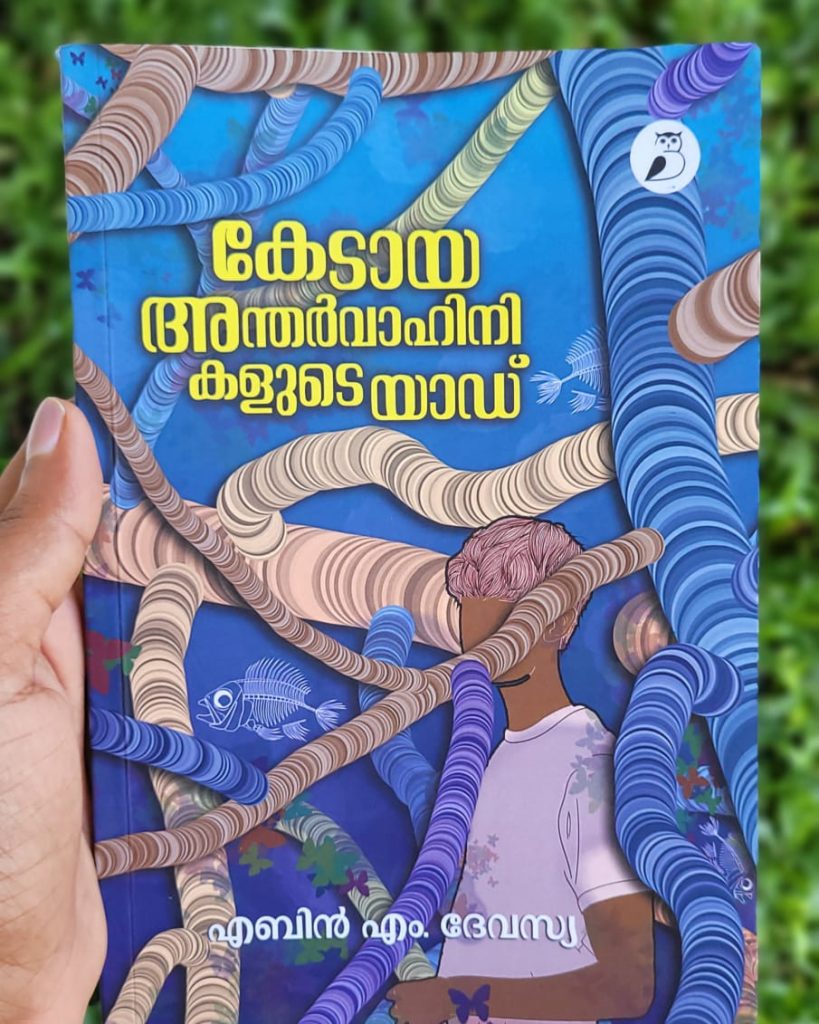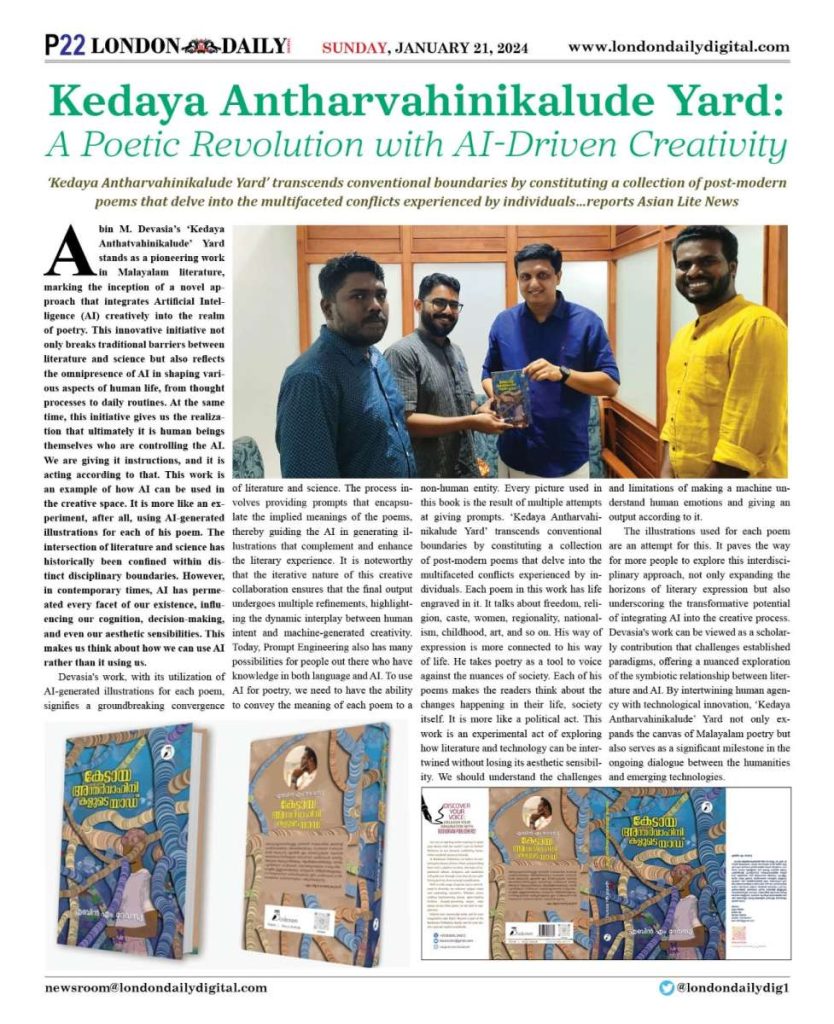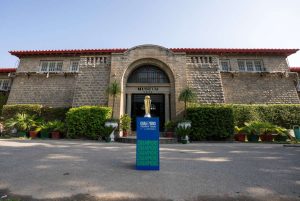‘Kedaya Antharvahinikalude Yard’ transcends conventional boundaries by constituting a collection of post-modern poems that delve into the multifaceted conflicts experienced by individuals…reports Asian Lite News
Abin M. Devasia’s ‘Kedaya Anthatvahinikalude’ Yard stands as a pioneering work in Malayalam literature, marking the inception of a novel approach that integrates Artificial Intelligence (AI) creatively into the realm of poetry. This innovative initiative not only breaks traditional barriers between literature and science but also reflects the omnipresence of AI in shaping various aspects of human life, from thought processes to daily routines. At the same time, this initiative gives us the realization that ultimately it is human beings themselves who are controlling the AI.

We are giving it instructions, and it is acting according to that. This work is an example of how AI can be used in the creative space. It is more like an experiment, after all, using AI-generated illustrations for each of his poem. The intersection of literature and science has historically been confined within distinct disciplinary boundaries. However, in contemporary times, AI has permeated every facet of our existence, influencing our cognition, decision-making, and even our aesthetic sensibilities. This makes us think about how we can use AI rather than it using us.

Devasia’s work, with its utilization of AI-generated illustrations for each poem, signifies a groundbreaking convergence of literature and science. The process involves providing prompts that encapsulate the implied meanings of the poems, thereby guiding the AI in generating illustrations that complement and enhance the literary experience. It is noteworthy that the iterative nature of this creative collaboration ensures that the final output undergoes multiple refinements, highlighting the dynamic interplay between human intent and machine-generated creativity. Today, Prompt Engineering also has many possibilities for people out there who have knowledge in both language and AI. To use AI for poetry, we need to have the ability to convey the meaning of each poem to a non-human entity. Every picture used in this book is the result of multiple attempts at giving prompts.

‘Kedaya Antharvahinikalude Yard’ transcends conventional boundaries by constituting a collection of post-modern poems that delve into the multifaceted conflicts experienced by individuals. Each poem in this work has life engraved in it. It talks about freedom, religion, caste, women, regionality, nationalism, childhood, art, and so on. His way of expression is more connected to his way of life. He takes poetry as a tool to voice against the nuances of society. Each of his poems makes the readers think about the changes happening in their life, society itself. It is more like a political act. This work is an experimental act of exploring how literature and technology can be intertwined without losing its aesthetic sensibility. We should understand the challenges and limitations of making a machine understand human emotions and giving an output according to it.

The illustrations used for each poem are an attempt for this. It paves the way for more people to explore this interdisciplinary approach, not only expanding the horizons of literary expression but also underscoring the transformative potential of integrating AI into the creative process. Devasia’s work can be viewed as a scholarly contribution that challenges established paradigms, offering a nuanced exploration of the symbiotic relationship between literature and AI. By intertwining human agency with technological innovation, ‘Kedaya Antharvahinikalude’ Yard not only expands the canvas of Malayalam poetry but also serves as a significant milestone in the ongoing dialogue between the humanities and emerging technologies.
ALSO READ-Sketching Dreams






